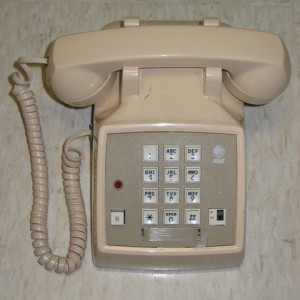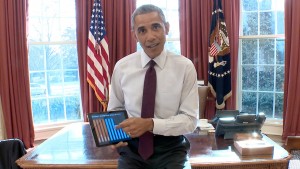FCC has now identified existence of reduced broadband service competition in the US
Article
My Comments

Is the US telecommunications industry heading back to the days of these phones, where competition didn’t exist?
The US-based broadband and IT press are identifying that the country is slowly creeping back to days of “Ma Bell” where there wasn’t any lively competition occurring in the telecommunications and Internet-service sector. They see the recent behaviour exhibited by AT&T, Verizon, Comcast and co as the undoing of the work by previous administrations to bring competition to this sector.
Examples of this include established “Baby Bell” telcos and cable-TV companies frustrating the provision of Internet service by private or public competitors such as Google Fiber or local governments. This is being facilitated through state governments passing model legislation to prohibit local governments from providing Internet service or communications-service infrastructure; or litigation taking place concerning the provision of infrastructure for competing communications services.
This is leading to situations where customers face poor customer service, price-gouging and onerous terms and conditions when they sign up for communications services like telephony, cable-TV or Internet service. But it isn’t only affecting households, rather the same situation also affects businesses who are after the essential communications services that “keep their axe sharp”.
For example, businesses are paying through the nose to set up any kind of leased-line or “middle-mile” telecommunications services that facilitate such things as ATMs or credit-card terminals. Even competitive wireless telecommunications providers are paying through the nose for the necessary backhaul from the mobile-antenna towers so their customers’ phones can work. Even if you just have an Internet service for your business like a DSL service, you will also end up paying dearly for this service to match your business’s needs and this can be a noose around your business’s neck especially if you are a small or medium-sized business.
One of the many consumer-activist groups, the Consumer Federation Of America, came forth with the results of a study on this topic. Here they identified that the incumbent carriers were overcharging businesses by US$71 billion for broadband services over last the 5 years.
The FCC are addressing this issue by focusing on how competitive the different communications and Internet-service markets really are and looking at ways to regulate to assure competition.
Here, according to FCC’s Chairman Tom Wheeler, the FCC would identify markets that aren’t competitive and make sure established players don’t harm consumers and businesses or kill innovation. This would be approached by creating a tailored regulatory framework to address non-competitive markets with the barometer for a non-competitive market being with two or less independent operators providing telecommunications and Internet service.
I would look at issues like the ability for a company to lease access to infrastructure whether as full copper or fibre infrastructure; or as access to the “poles, pits, pipes and towers” that the infrastructure runs through. This can also include the ability for a European style of operation where there is a “wholesale-retail” method of selling communications services, allowing for different retail operators to sell the same wholesale bandwidth.
Other issues that Uncle Sam would need to examine include continual surveillance of the market on an antitrust basis such as potential mergers or buyouts to assure competition. This would include dealing with the political influence that established operators are waging with state legislatures and the judiciary to prevent the existence of competitive markets.
To the same extent, the issue of broadband deployment in to the USA’s underserved areas like poorer communities or rural areas still needs to be tackled so as to prevent carrier “redlining”.
CC BY-SA 3.0, https://commons.wikimedia.org/w/index.php?curid=936797

![US Flag By Dbenbenn, Zscout370, Jacobolus, Indolences, Technion. [Public domain], via Wikimedia Commons](https://homenetworking01.info/wp-content/uploads/2014/08/Flag_of_the_United_States.svg_-300x157.png)
